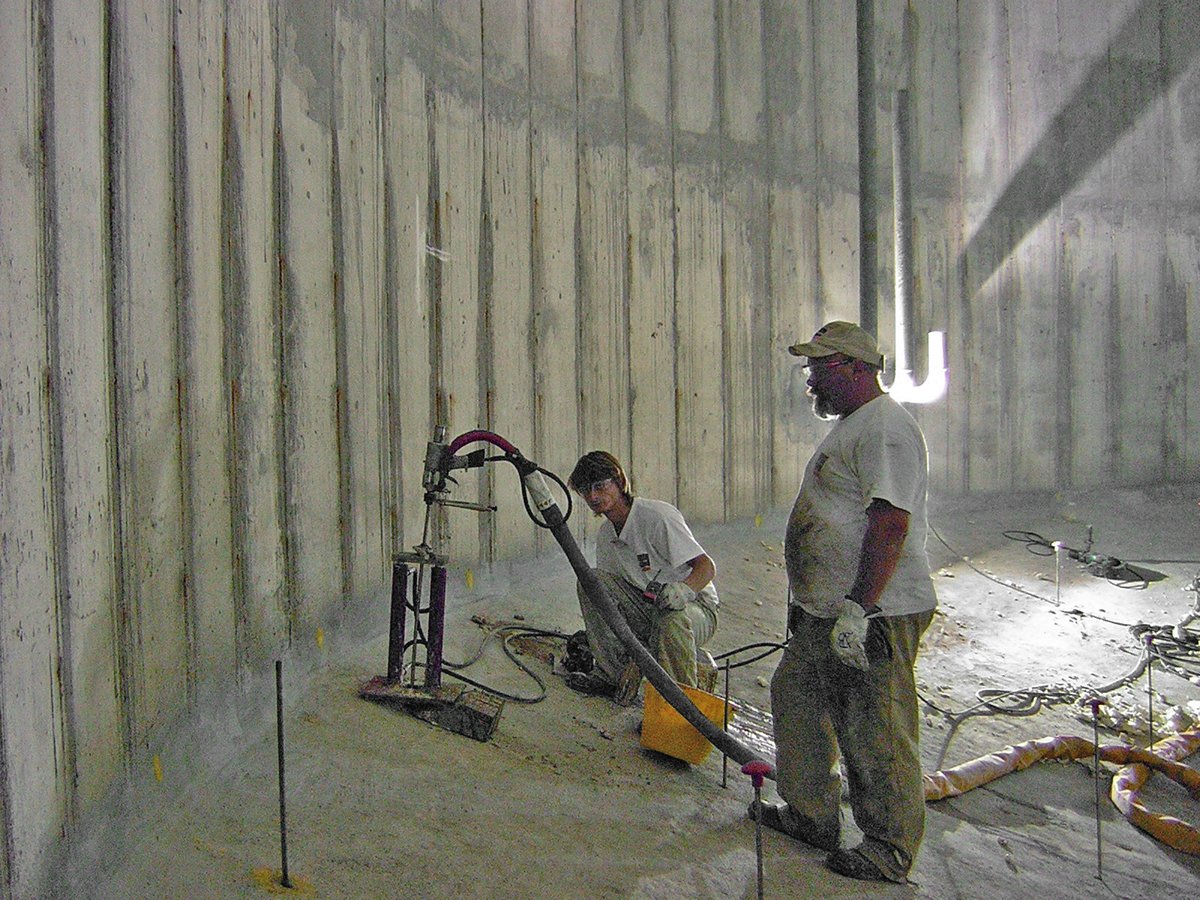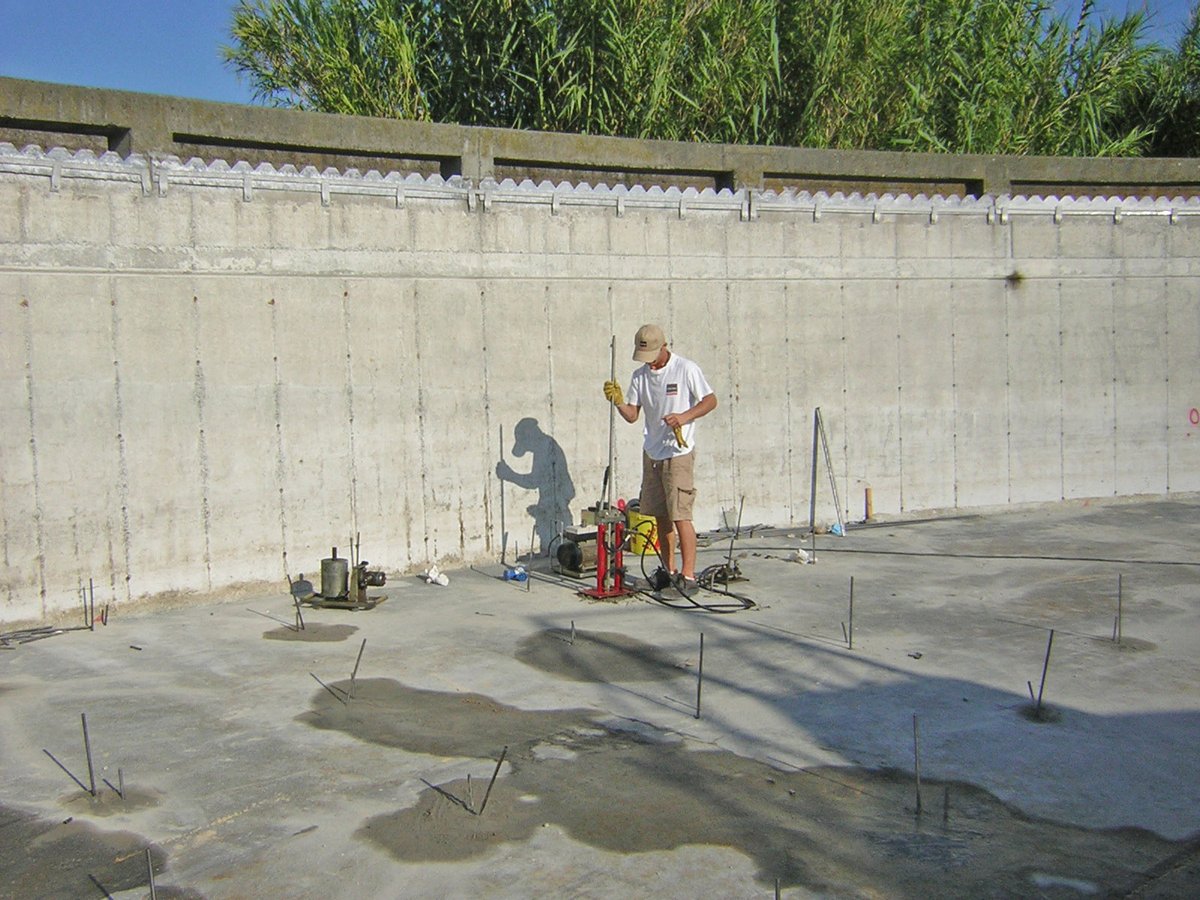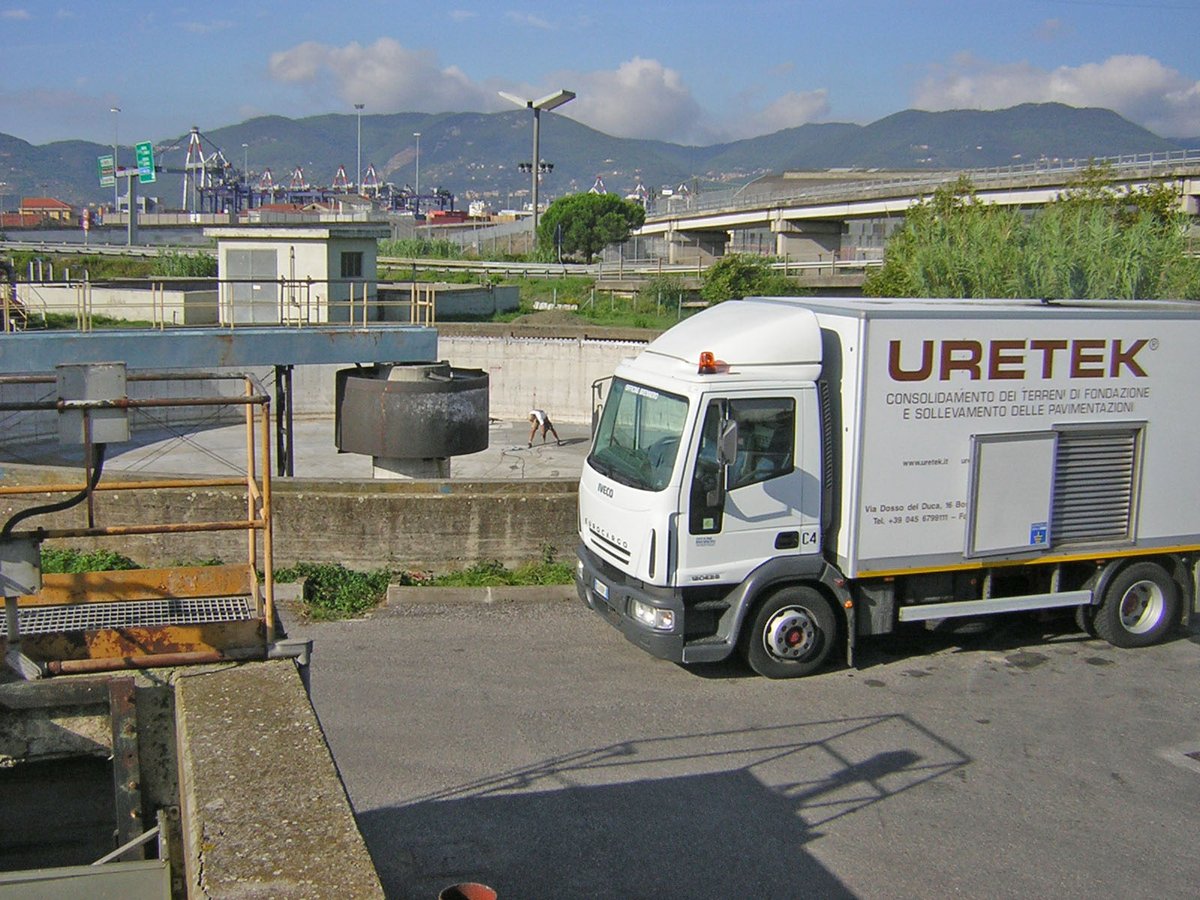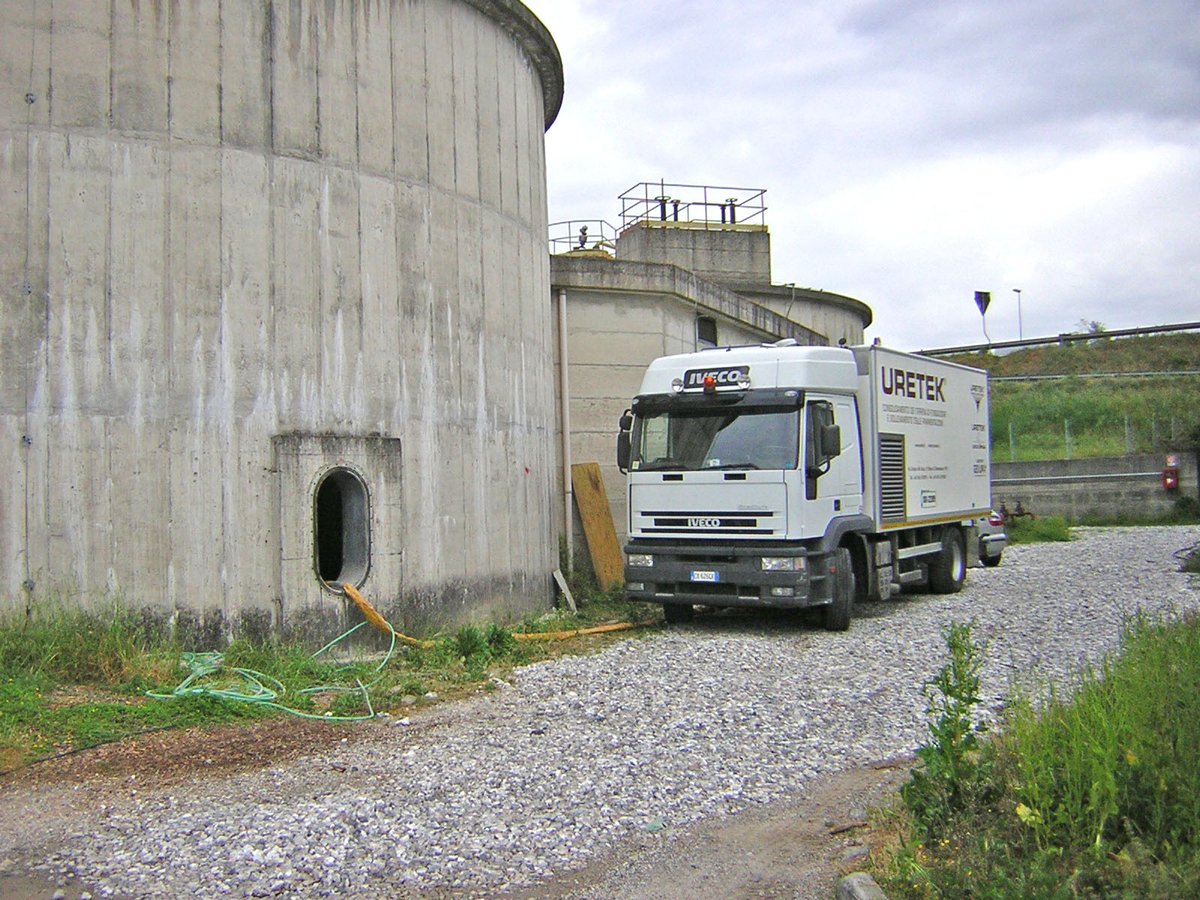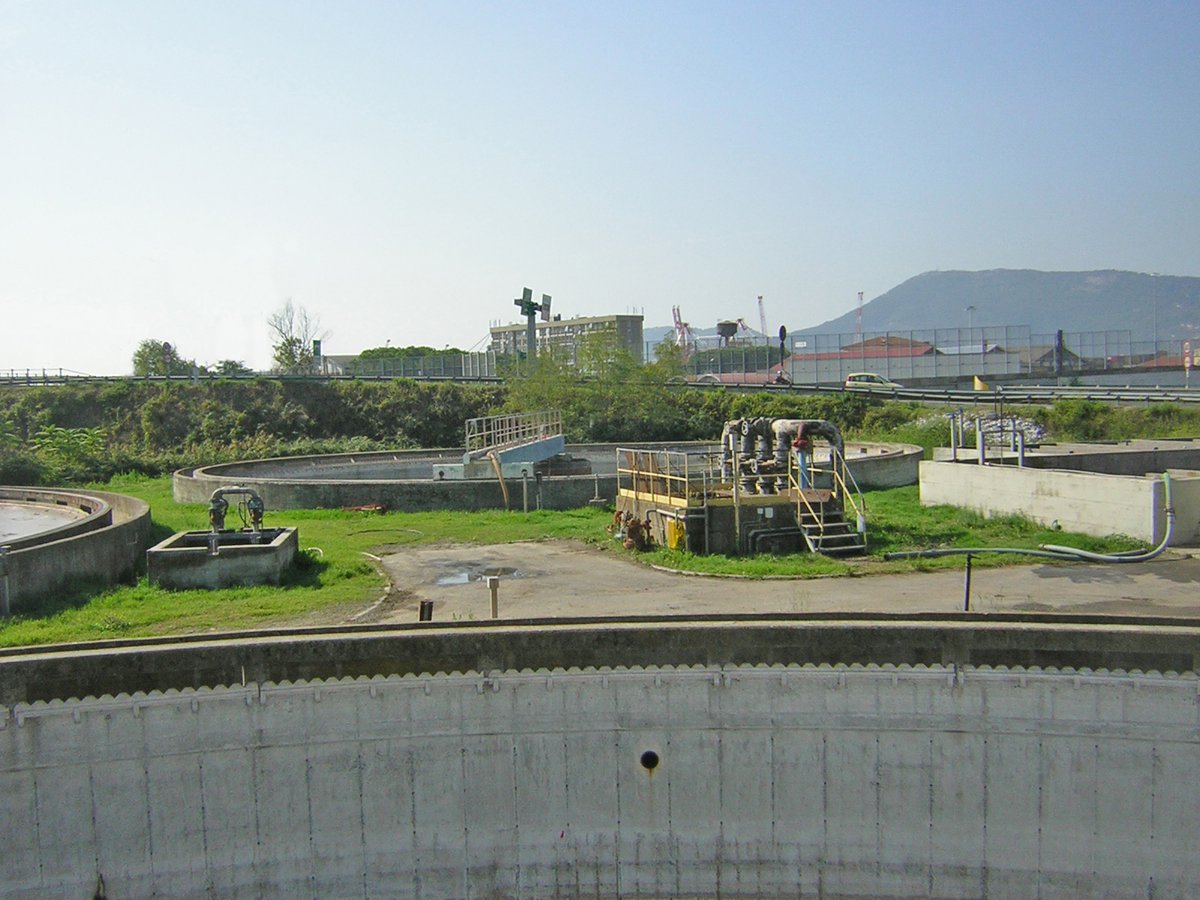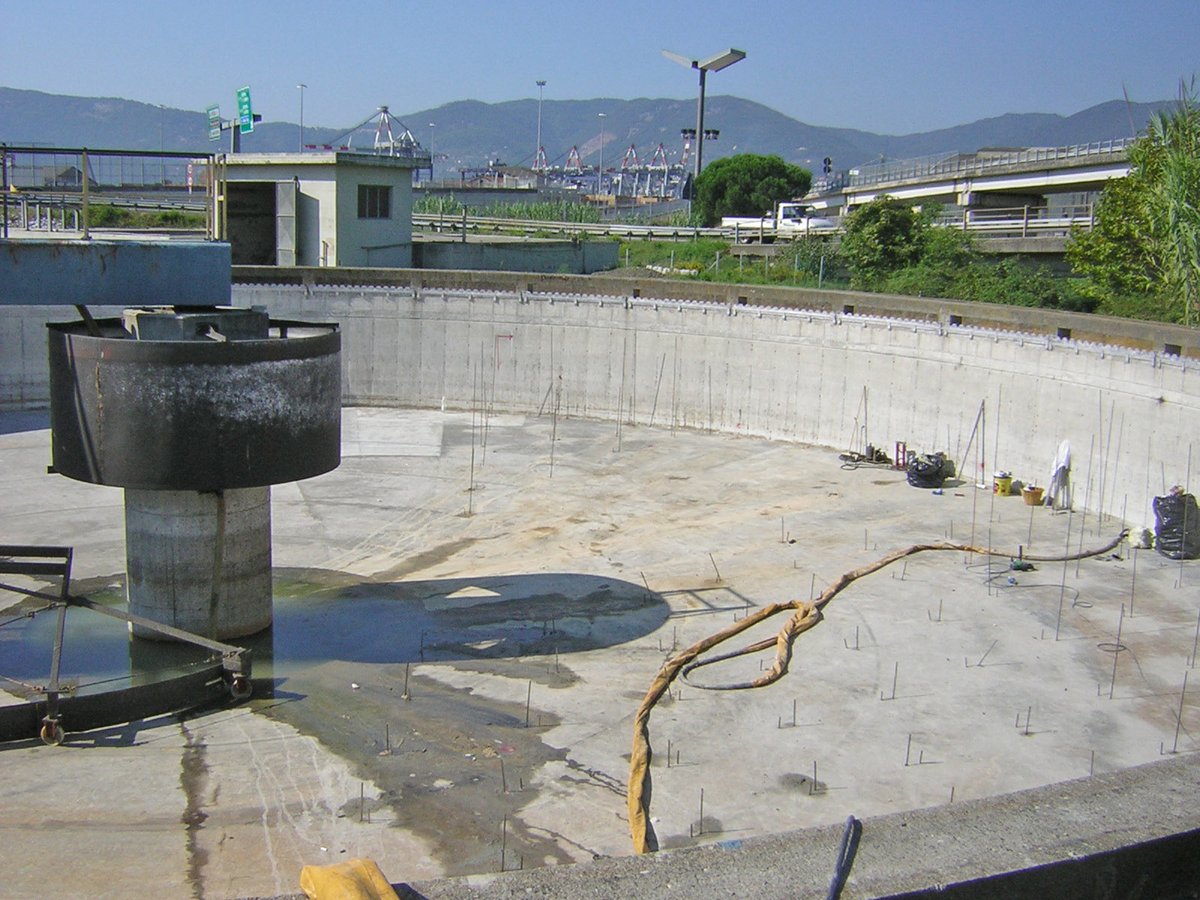The ACAM s.p.a. water treatment plant in Stagnoni (La Spezia) was built in the 1980s. It consists of three cylindrical anaerobic digesters in reinforced concrete with a diameter of 15 metres each and two sedimenters with a diameter of 27 metres each.
THE PROBLEM
In the course of their use, the sedimentation basins had shown differential failure related to soil consolidation or washout due to leaks. The digesters, also dating from the 1980s, were expected to operate at full load, which would have caused the foundation slabs to fail. Such failures had to be limited within a predefined margin.
Customer needs
The customer needed not only a quick, long-lasting intervention, but also full safety of the system during and after the work.
Why Acam SpA chose Uretek:
- Speed
Careful planning and programming of the times allowed the work to be completed in a relatively short time; - Competitive prices
- Non-invasive
The intervention proposed by Uretek did not require excavations or masonry work, and it did not dirty the area or produce waste; - Continuous monitoring of the work
Both during and after the intervention, the activities were subject to real-time control by highly qualified personnel using advanced laser technology; - Application of the exclusive Uretek Deep Injections® technology
With the Uretek Geoplus® expanding resin with high swelling pressure, the soil is compacted and the structures stabilized; - Respect for the environment
Above-ground mixing of the Uretek® resin creates a final inert product that does not release solvents into the soil or possible water tables in the area.
THE SOLUTION
It was necessary to consolidate the foundation soil, increasing its load-bearing capacity and eliminating any voids present at various depths. The geotechnical characteristics of the soil were rebalanced to lift the structure at localized points and, in the case of the sedimenters, to partially repair the differential subsidence. To reach these objectives, we chose the Uretek Deep Injections® technology which, with injections of the special Uretek Geoplus® expanding resin, consolidated the ground in two distinct but complementary phases:
- PHASE 1 – Surface compaction:
We made injections in the intrados of the foundations to improve the geomechanical characteristics of the terrain and fill the larger voids present in the foundation-soil interface. - PHASE 2 – Deep consolidation:
We made injections at various levels, starting from the intrados of the foundation, through the volume of soil most affected by the loads above.
THE INTERVENTION IN DETAIL
Operational phases
The digester tanks rest on three inverted cone-shaped slabs (h = 2.30 m), made of 40-cm-thick reinforced concrete. When empty, they produce a ground pressure of 33.0 kN/m2, which reaches 93.3 kN/m2 when fully loaded. The holes we drilled revealed the presence of voids with an average height of 5 cm, for a total volume of approximately 25 m3. These voids were located at the intrados of the supporting slabs of the tanks, especially near the centre. At greater depths there was a layer of topsoil consisting essentially of erratic stone of significant size immersed in a fine matrix. The geotechnical characteristics of this layer ranged from poor to very poor down to a depth of 7.50 m below ground level.
We consolidated the foundation soil by intervening on the entire thickness of the fill, i.e. making resin injections starting from a depth of 6.5 m below ground level. We used the ‘column’ system, in which the injection tube is retracted at a controlled speed as the resin is dispensed. The full intervention took 15 working days.
Checks and Inspections
- laser monitoring of the building during injections;
- precise levelling for about 7 months after the intervention;
- dynamic penetration tests (DPM 30) before, during, and after the intervention;
- electrical tomographic tests of the foundation soil affected by the sedimentation tanks and digesters.
Observations
The case in question highlights the unique aspects of the Deep Injections® method applicable to large slabs set on soil with poor geotechnical characteristics. Moreover, part of the intervention was carried out with a view to prevention, considering a future increase in load on the structure.
